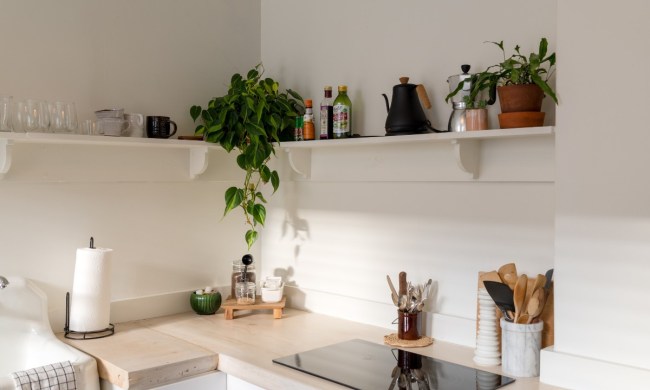You probably power down your computer at the end of each workday. However, are you extending yourself the same courtesy? Taking time to indulge in something relaxing allows you to re-charge your batteries and can make you happier at home and on the job.
There are apps for all types of mindfulness, from gratitude journals to meditation and yoga. If those work for you, that’s great. However, sometimes using an app to power down has its drawbacks. The blue light from screens can impede sleep. It’s also easy to get distracted if you have a bunch of text messages or push notifications popping up constantly.
Back in the day, people practiced relaxation without an app all the time, though. If apps aren’t cutting it, try these device-free methods.
Get an essential oil diffuser
Essential oils are one way of engaging in aromatherapy and that can be incredibly soothing. When your scent molecules are stimulated, they travel from your nose to the amygdala, the part of your brain that helps control how you process emotions. You can put a diffuser in your room (just make sure it’s out of reach of any pets or children, as the oils can be toxic if digested). There are many to choose from, including budget-friendly reed diffusers and more expensive ones that transform the oils into a mist that can fill a room larger than 300-square feet. Whatever you choose, you’ll want to use oils known for relaxation. Lavender, rose, orange, chamomile, and clary sage are among the scents that fit that bill.
Try breathing exercises
When we’re upset about something, a friend or loved one will often tell us to, “Take a deep breath.” It can be easier said than done, particularly if you’re very stressed out. However, your friends may be onto something — turning your attention to your breath can be a great way to practice mindfulness daily. Start off with simple belly breathing exercises.
- Get comfy. Sitting or lying down are two popular positions for breathing exercises.
- Place one hand on your chest and the other on your stomach, right below your bottom ribs.
- Inhale deeply through your nose. Focus on how your belly is moving your hand. Since this exercise is about belly breathing, you’ll want to keep your chest still.
- Pretend you are about to whistle by pursing your lips. Instead, exhale, feeling the sensation of your hand moving inward with your stomach.
- Repeat three times or more until you feel relaxed.
Start journaling
Did you have a diary when you were a child? It may be time to bust it back out. Journaling can be a great way to help you sort through your feelings or become more mindful by taking note of the world around you. For example, you can write about things that are bothering you, and re-read your entries over time to note patterns in your moods. This documentation can help you figure out if you need to take further steps to manage your stress, like seeing a therapist. You might also write about how the smell of a pot of coffee brewing in the morning or crickets chirping at night makes you feel.
Get moving
You probably know exercise reduces stress, but physical activity may sound more like a way to power up than power down. However, even simple movements like walking can enhance your well-being while also promoting relaxation. For example, a study found that moderate exercise helped improve the quality of life in breast cancer patients. If you’re heading out for a walk, try making it even more of a mindfulness exercise by engaging all five senses. Notice the sights and smells of fresh-cut flowers or grass and the soft chirping of the birds. Take a sip of water from your water bottle and note how crisp it tastes. Feel how the cool breeze or warm sun feels against your skin. Doing this exercise can help you stay in the moment and forget about everyday stressors for a moment.
There’s an app for everything these days, including several claiming to help us become more mindful. However, for various reasons, such as constant push notifications interrupting your vinyasa flow, apps may not really get you into a serene state of mind. There’s no need to get discouraged as there are plenty of ways to relax without a device. Even if apps do work for you, you may find that it’s nice to take a break from screens. Simple breathing or taking a relaxing walk in which you engage all of your senses are two tried and true ways to chill out. Journaling can help you collect your thoughts and find patterns within your moods, and aromatherapy, such as diffusing some relaxing essential oils, can allow you to breathe easier. Once you find something that works for you, try to make it part of your daily or weekly routine. Just a few moments to yourself can go a long way.
BlissMark provides information regarding health, wellness, and beauty. The information within this article is not intended to be medical advice. Before starting any diet or exercise routine, consult your physician. If you don’t have a primary care physician, the United States Health & Human Services department has a free online tool that can help you locate a clinic in your area. We are not medical professionals, have not verified or vetted any programs, and in no way intend our content to be anything more than informative and inspiring.





